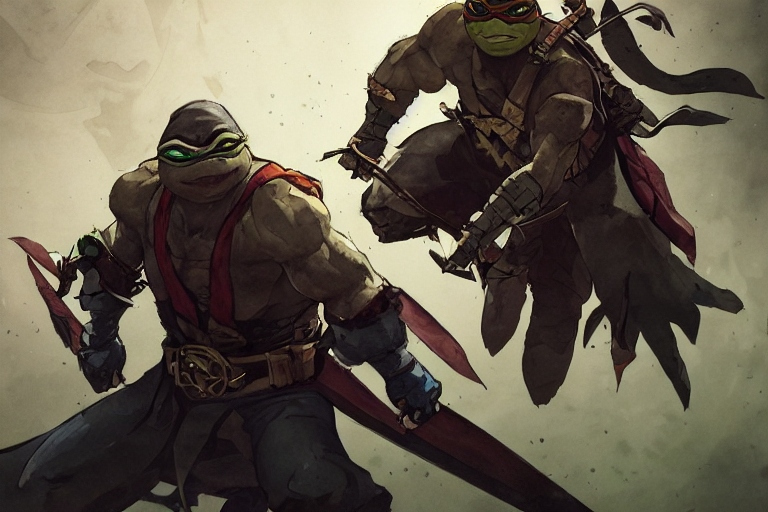Of course this is done in idiocy imperial. Fuck your 'Murican “we need to be special so we use this objectively shitty thing to be different”. Only 3% of the world has a use for this, while the rest 97% are fucking tired of having to do extra work to convert.
“Pick the right blade.” Santoku. The answer is Santoku.
There are but two necessary knives. A chef’s knife and a paring knife. Sharpened appropriately. Usually not even a paring knife but sometimes the small size is beneficial.
Bread knife would like a word. Chef knife technically works but bread knives are usually longer and work much better at cutting without smooshing.
Sharpen your knife. If it’s not able to cut bread or tomatoes without smooshing it needs sharpening.
Bread knives are so much nicer to cut bread with though. But yeah, a chef’s knife and a paring knife are all you “need”.
I definitely need a bread knife to properly cut good bread, if only for the teeth. The bread I eat is more dense and has a hard crust compared to say American wonderbread. I also like to dry out some of it and then double toast slices for that extra crunchiness. No way a smooth edge can deal with that.
I can cut bread and tomatoes. A bread knife does a better job with bread.
If you use wooden cutting boards / blocks, rub mineral oil into them every once in a while. This will reduce the water they absorb and make them less likely to warp or split.
I use a bred knife to slice cheese off a block every day. Line it up and push down, one hand on handel the other on the spine at the top. It works better than any other knife to slice cheese blocks.
This post makes it sounds like I am committing a war crime.
A chefs knife will do for everything. Keep it sharp enough and it’ll even slice bread. As for the onion horizontal cuts are unnecessary. Offset radial cuts are fine (as you move away from the centre vertical cut you angle it more).

What’s the x axis on those graphs? I can’t zoom in enough on this picture to read it. I did look it up, but I only found versions with the exact same resolution
I have absolutely no idea. I grabbed the first illustration that showed what I described (poorly).
The chopping technique is not really that necessary. It’s great for chopping lots of veggies at speed, but if you’re just cutting veggies for a single meal then there’s not that much benefit unless you’re already highly practiced and that’s your default.
What’s far more important is just being cognizant for each cut you make. Walk don’t run.
The chopping technique is about eliminating risk, mostly. Sure for a single meal and being aware you’ll be fine. But getting into the habit of a good technique means you’ll be fine even when you’re tired or distracted
If you want to spend the time and effort to practice that technique, go for it. But the benefits don’t really make it worth it for most people.
into the habit of a good technique means you’ll be fine even when you’re tired or distracted
The technique described in the image is not the only “good technique”. A person could reasonably develop their own “good technique” simply by being cognizant of their cutting.
The chopping/grip advice is missing a critical component: your two farthest forward knuckles on your non-knife hand should be contacting the knife blade at all times. This gives you precise control and you know exactly where the cutting surface is. It takes a lot of practice to do properly, but that is how the pros do it. I recommend this video from Jacques Pepin for an example: https://youtu.be/nffGuGwCE3E
As a chef, the only inaccuracy I see here is that bamboo cutting boards are good for knives. They are a great, cheap, sustainable option, but the silica content makes bamboo incredibly hard, and it will dull your blades faster than wood or plastic cutting boards.
What about using the bread knife for meat?
Edit: also what’s “produce”?
American for fruit and veg.
“Produce” is presumably fruit and vegetables, although that’s a pretty broad category to lump together given that so many vegetables behave differently. Consider a tomato versus lettuce or a yam, for instance.
I never understood why people use serrated knives for bread, it gets crumbs everywhere. I use a sharp chef knife instead and it’s much cleaner. I use it for 95% of stuff, there’s no much need for any other.
That’s one way to say you never had anything besides soft buns and bread.
Once you get full grain or (as someone mentioned) a bread with a hard crust, you will wish for a serrated knive.I’m European. I don’t eat soft bread. I think none of you have a sharp knife.
If you’re cutting soft soft bread, then a plain blade is fine, but if it’s a crusty bread like a sourdough, the serrated blade is much better at cutting the crust without crushing the soft interior (IME, not a chef)
I don’t see this suggesting a bread knife for meat, but a dull serrated blade beats a worn plain edge for any purpose. And produce is anything grown like fruit and veg.
It’s got produce, bread, and meat highlighted for the bread knife.
The only thing I’ve ever used a bread knife for is bread.
Ah I didn’t see that little spiral graph. I agree with you for anyone who keeps their knives sharp. But if you’re trying to cut thin slices off a roast and have to choose between a bread knife and a dull chef’s knife, I’d likely go for the bread knife. That said, I don’t know they intended it that way, and it totally could have just been an error.
I guess a bread knife works pretty well for slicing roast, i.e. the dish, not raw meat. Additionally, one may also use it for chopping e.g. kale or pumpkin.
The infographic only states that a bread knife is good for bread. It is correct in this regard.
Produce is the general term for fruits and vegetables and things of the like.
The bread knife has markers in the produce, bread, and meat sections
Chinese chef knife is missing. It’s not a meat cleaver, the blade isn’t nearly thick enough for it, but it does make quick work of veg. It’s also one of the only knives used for Chinese cooking. Learned about it from Martin Yan.
I will add another bullet point to the list above, specifically regarding cutting boards. Poly cutting boards are also acceptable and primarily what I use. However, if I see you using a glass cutting board or a plate as a cutting board, or chopping directly on your granite countertop, I am afraid I am going to have to hurt you.
I am, as you can imagine, the default knife sharpener within the circle of my family and friends. However for quite some years I would not sharpen any knives for my sister anymore because she refused stop using her stupid 1980s glass cutting boards. (I believe they were probably actually intended to be serving trays, but good luck making people understand that.) She kept complaining that my sharpening was “no good” because her knives dulled so quickly.
I was eventually able to coordinate with my brother in law who was also sick of it, and we located all of the glass boardlike objects in the house and surreptitiously threw them away.
Doing the lord’s work here.
Is “poly” local american slang for plastic? Anyway I prefer wood because I’d rather have some wood fibres in my food than microplastic. Not that anyone knows if it’s actually harmful or not
Sort of. Polymer, actually. It’s a common end-run around calling something “plastic” outright because that in and of itself is typically a shorthand for “cheap” or “flimsy.”
Anyway, the plastic cutting boards in commercial use (i.e. the ones I use because I am that kind of nerd) are made of high density polyethylene.
Wood for most stuff, plastic for meat and fish because I don’t want meat juice soaking into the wood.
Apparently, surprisingly, bacteria grow/anchor better in plastic. than wood. (wood might still absorb the juices more easily)
Fair point
This should be noted that the knife part is only for western style knives. Same with the cutting technique. That’s only for a curved type blade.
Well this doesn’t even list all of the western style kitchen knives
deleted by creator
I think that’s a “santoku” knife, but I’m not an expert. And I think it’s the style of knife, not a brand, but it works pretty much just like a chef’s knife as near as I can tell (as a home cook that pays attention to techniques but hasn’t sought out training on knife styles before)
Santoku, maybe?
There is one knife I find absolutely essential that is missing:
Bec Oiseau. Sometimes also known as a sheep’s foot knife.
It’s a paring knife, but one where the blade is absolutely straight and it’s the spine that curves over near the tip. It works far better than any curved paring knife at cutting apart small items in the hand, like fruits.
in my experience, granton blades just make the food stick more. i always figured it was just a lazy way for companies to save on materials.
It doesn’t help them save on material since the knife is ground from an originally flat slab of steel. The amount of material they remove from that bar is irrelevant to their materials cost, although it does add a bit of machine work.
The scallops in the blade are effective at preventing some foods from sticking only if you are using a long slicing motion. When chopping down from above they accomplish nothing.
that settles it - i’m just a bad choppa







